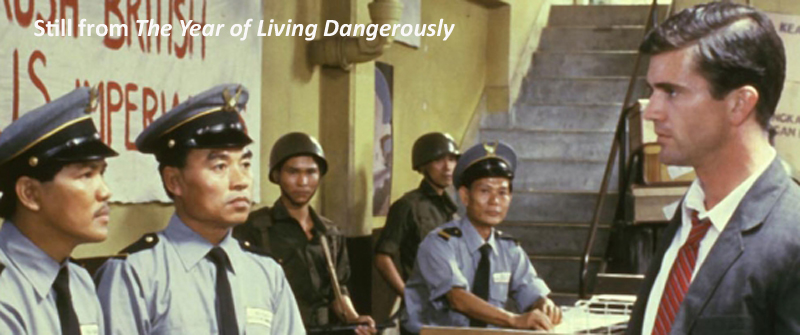
14 Oct Blog: On the unexpected virtue of ‘The Year of Living Dangerously’
One of the films screened at a recent conference about Indonesia’s 1965 mass killings was the Australian (Hollywood produced) The year of living dangerously (Peter Weir, 1982). David Kloos saw it for the first time, and he was taken by surprise.
The conference 1965 Today: Living with the Indonesian Massacres started with a Hollywood movie, a short documentary about prison camps, and a keynote lecture by Ariel Heryanto.
I hadn’t seen The Year of Living Dangerously before. As conference co-organizer Peter Keppy explained in his opening address, among those who know something of Indonesia’s modern history, this is a controversial film. Set in Jakarta, against the backdrop of the tensions leading up to Suharto’s coup d’etat, it shamelessly reproduces a cold war version of events, suggesting that the ‘communists’ were responsible for the events of 1965.
Equally disturbing is the image of Indonesia as a society that – when the conditions are ‘right’ – is ready to explode in rage. In 1982, when the film came out, it was sufficiently clear that this was not a so-called ‘horizontal conflict’. The acts of violence that washed over Indonesia in the aftermath of 1965 were orchestrated by the new power holders in Jakarta, intended to exterminate the political left for once and for all.
Yet, at the same time, watching this film pleased me on certain levels.. Contrary to the image often found in products of western popular culture, Indonesia is portrayed as a country with a history, a political history even, and one shaped by sharply conflicting ideas about the ways in which state and society should be organized.
Compared to other Hollywood productions set in Indonesia (such as Eat Pray Love, which presents a timeless, mystical orient, a ‘people without history’), this is pure gain. And I am not even speaking of the films in which Indonesia is reduced to the ‘deep jungles of Borneo’.
Toward the end of the movie – the coup has just taken place – the Australian foreign correspondent played by Mel Gibson witnesses a summary execution of a group of ‘communists’ on the side of the road. Peter Keppy told me afterwards that this is one of the few scenes that were not adapted from the original novel by Christopher Koch.
The year of living dangerously present its viewers – most of whom are not experts, like the conference attendees – with a harmful, biased reading of the events of 1965. But it also comes with a rare, tangible and powerful image of the atrocities – and the underlying ideology – that ushered in Suharto’s New Order. This, I think, is not entirely without virtue.




No Comments